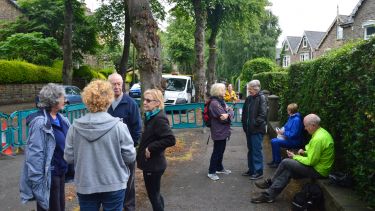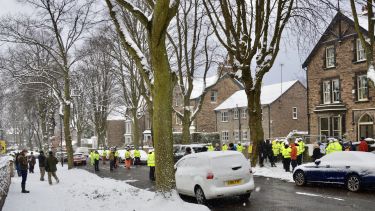Drs Jan Woudstra and Camilla Allen bring together a host of international, interdisciplinary contributors who explore the politics of street trees, as well as the institutions, actors and processes that govern their planning, planting and maintenance, in a new book published on 18 March.
The Politics of Street Trees comes in the context of mounting environmental and social challenges and reveals a huge amount about the nature of political conflict, social change and modern life.
“By pursuing an interdisciplinary approach, The Politics of Street Trees produces an information base for academics, practitioners, politicians and activists alike,” said Dr Woudstra.
We intend for The Politics of Street Trees to contribute to a fairer political debate that helps to promote more democratic environments that are sustainable, equitable, comfortable and healthier.
Dr Jan Woudstra
Editor of 'The Politics of Street Trees'
Sheffield contributions
The opening section explores historic perspectives on street trees and politics across cultures.
Jan Woudstra considers roadside tree planting in the Netherlands, while Camilla Allen provides a fresh take on Sheffield’s infamous street tree dispute in A broken covenant: the creation and desecration of Sheffield’s living memorials.
The book also discusses the value of street trees and their contribution to our environment — both physically and philosophically — and provides a robust challenge to the neo-liberal perspectives that continue to dominate political narratives.
Dr Ross Cameron reflects on how the ‘ecosystem services’ of street trees — such as their ability to cool environments and filter pollution — can and should influence attitudes to their planning, planting and maintenance, while Dr Nicola Dempsey analyses street tree strategies in the UK in Streets Ahead or the Road to Hell?
Dr John Miller from the School of English examines the meaning of street trees in What street trees mean: memory, beauty, hospitality.
The volume concludes with case studies of community engagement, civil action and governance and explores both the constraints of law and the importance of people power.
Here Professor Matthew Flinders, from the Department of Politics and International Relations and Ian D. Rotherham from Sheffield Hallam University trace the socio-political dynamics of street tree disputes, using the events in Sheffield as a case-study.
Film Screening
The publication of The Politics of Street Trees coincides with a screening of The Felling, a film made about the protests in Sheffield, due to be shown at Sheffield City Hall on Sunday 20 March.
Whilst The Felling — Directed by local documentary makers Jacqui Bellamy and Eve Wood — is not connected to the Department, both book and film share common ground in their examination of the Sheffield street tree protests, albeit from varying perspectives.
The Politics of Street Trees comes out of a two-day conference held in the Department in 2019 and features many of the original speakers.
‘The Felling’ Premiere | Sheffield City Hall | Sunday 20 March 2022The Politics of Street Trees | Jan Woudstra, Camilla Allen | Taylor & Francis
Reviews
"Deftly weaving together narratives of politics and landscape, this timely book brings a fresh, international perspective to the complex and contested subject of urban trees."
—Tom Williamson, Professor of Landscape History, University of East Anglia, UK.
"The book provides unique insights into street trees and the broader politics that shape our cities. A compelling collection of case studies from different points in history and varied places around the world. It is essential reading for anyone interested in urban nature or the politics of urban spaces."
—Tenley Conway, Professor, University of Toronto, Mississauga, Canada
"Decision-makers, technicians, designers, and tree lovers will all benefit from this manifesto on the political dimension of urban trees. Explored within the perspective of long history as well as through recent dissensions around the world, this learned and sensitive work offers a challenging perspective, and enticement to conserve roadside planting as cultural heritage."
—Stéphanie de Courtois, Associate professor at Ecole nationale supérieure d'architecture de Versailles, France
"Street trees not only beautify the cityscape, but city dwellers also often build an emotional bond with them. They play a central role in the discussion about biodiversity and adaptation to climate change. This book provides background information and helps to further develop this crucial component of urban green space in a forward-looking manner."
—Norbert Kühn, Professor, Head of the Department of Vegetation Technology and Planting Design, Technical University, Berlin, Germany



